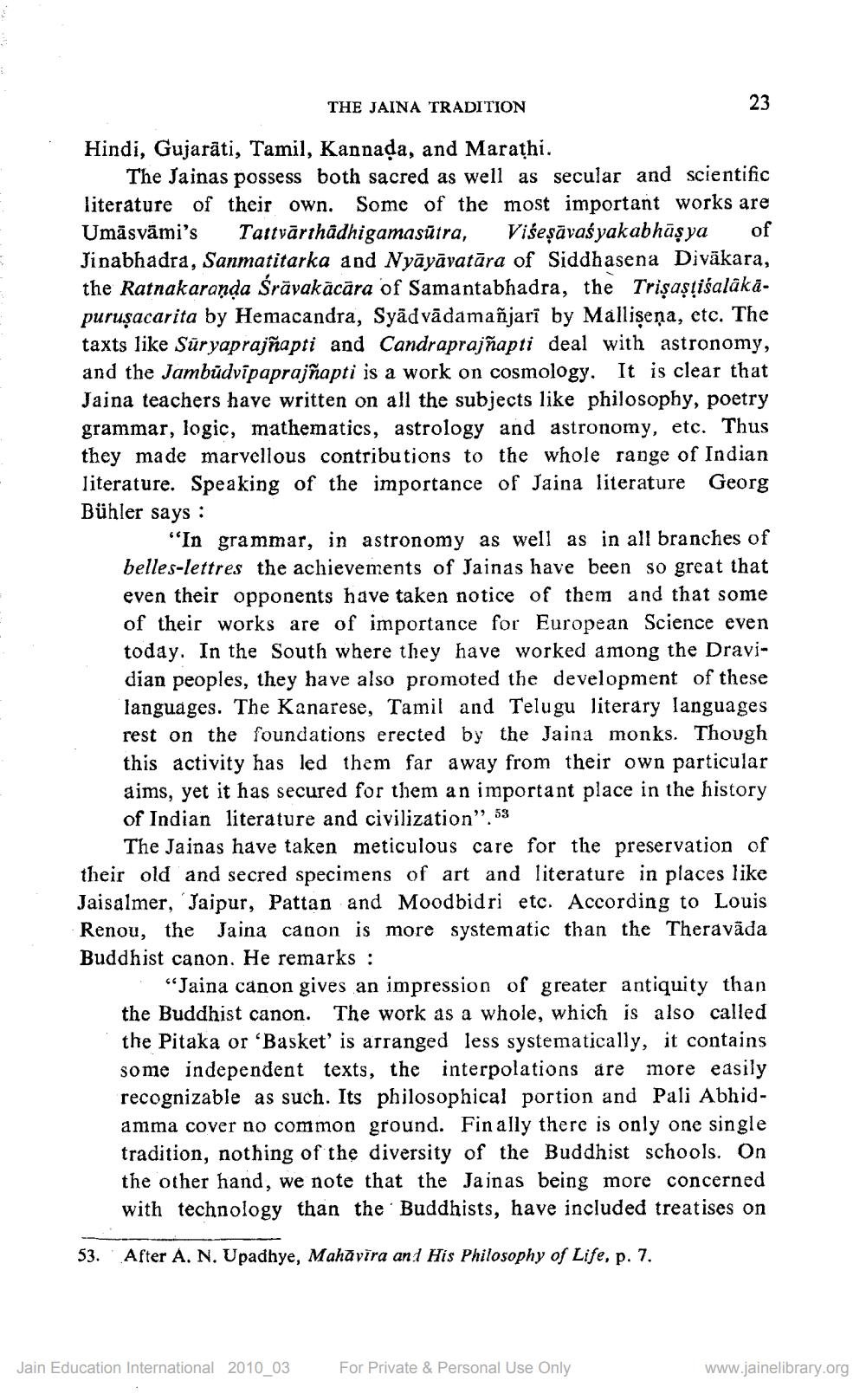________________
THE JAINA TRADITION
23
Hindi, Gujarati, Tamil, Kannada, and Marathi.
The Jainas possess both sacred as well as secular and scientific literature of their own. Some of the most important works are Umāsvāmi's Tattvārthādhigamasutra, Višeşāvas yakabhāșya of Jinabhadra, Sanmatitarka and Nyāyāvatāra of Siddhasena Divākara, the Ratnakaranda Śrāvakācāra of Samantabhadra, the Trişaşțišalākāpuruşacarita by Hemacandra, Syād vādamañjarî by Mallişeņa, etc. The taxts like Sür yaprajñapti and Candraprajñapti deal with astronomy, and the Jambüdvīpaprajñapti is a work on cosmology. It is clear that Jaina teachers have written on all the subjects like philosophy, poetry grammar, logic, mathematics, astrology and astronomy, etc. Thus they made marvellous contributions to the whole range of Indian literature. Speaking of the importance of Jaina literature Georg Bühler says:
"In grammar, in astronomy as well as in all branches of belles-lettres the achievements of Jainas have been so great that even their opponents have taken notice of them and that some of their works are of importance for European Science even today. In the South where they have worked among the Dravidian peoples, they have also promoted the development of these languages. The Kanarese, Tamil and Telugu literary languages rest on the foundations erected by the Jaina monks. Though this activity has led them far away from their own particular aims, yet it has secured for them an important place in the history of Indian literature and civilization”. 53
The Jainas have taken meticulous care for the preservation of their old and secred specimens of art and literature in places like Jaisalmer, Jaipur, Pattan and Moodbidri etc. According to Louis Renou, the Jaina canon is more systematic than the Theravada Buddhist canon. He remarks:
“Jaina canon gives an impression of greater antiquity than the Buddhist canon. The work as a whole, which is also called the Pitaka or 'Basket' is arranged less systematically, it contains some independent texts, the interpolations are more easily recognizable as such. Its philosophical portion and Pali Abhidamma cover no common ground. Finally there is only one single tradition, nothing of the diversity of the Buddhist schools. On the other hand, we note that the Jainas being more concerned with technology than the Buddhists, have included treatises on
53.
After A. N. Upadhye, Mahāvīra and His Philosophy of Life, p. 7.
Jain Education International 2010_03
For Private & Personal Use Only
www.jainelibrary.org




